Please Note: Firefox and some other search engines are not suitable
– Use “Internet Explorer” for this page to load perfectly!
Click the logo above to reach
the ssMaritime FrontPage for News Updates & “Ship of the Month”
With Reuben Goossens
Maritime Historian
Peninsular and Oriental Steam Navigational Company - P&O
RMS Kaisar-i-Hind (2)
“Kaisar-i-Hind”
is a Hindi name meaning “Empress of
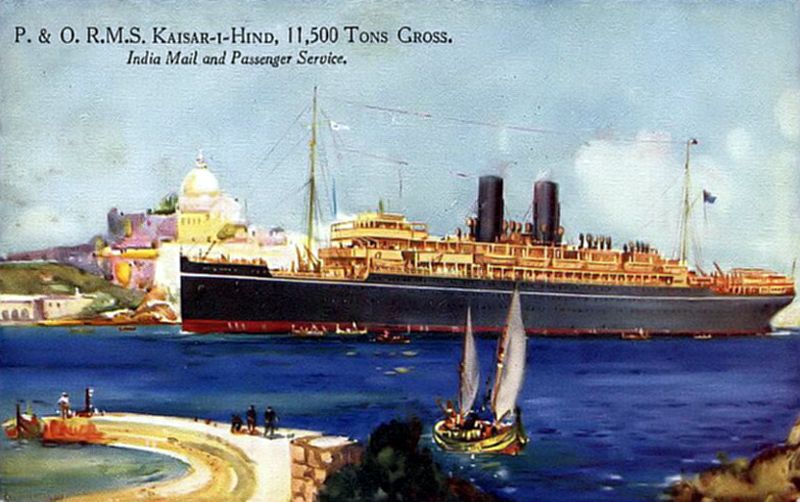
An
artist impression of the RMS Kaisar-i-Hind after 1926
Postcard
from the author’s private collection
Her General
History Page
Introduction:
Her keel was soon laid down in Yard number 327, but amazingly, she remained a ship without a name although it was thought by many that she would be named “Taj Mahal,” but that was not to be! As her hull and part of her superstructure had been completed, she was launched on June 28, 1914 by a Miss Edith Cole yet she remained without a name, thus the unnamed ship was taken to her fit-out berth for completion.
When completed she was showing off her traditional P&O livery being a black hull with red boot topping, a white ribbon around the hull, and her superstructure in what I personally consider a horrid and dull buff paint. All this was topped by two tall black funnels and a pair of masts, but what was interesting is that the masts were assisted by electric cranes, both fore and aft.
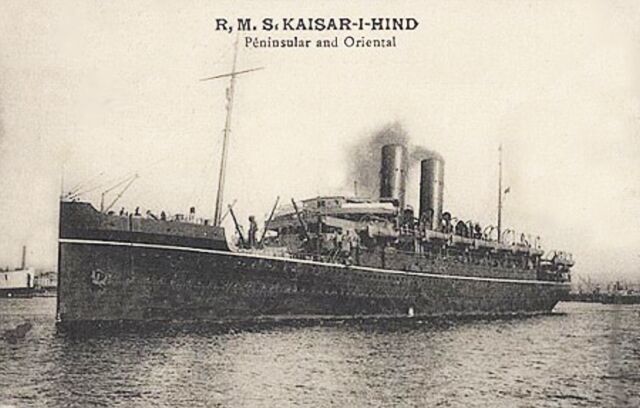
This
is the very first photographic postcard of the RMS Kaisar-i-Hind that was ever
released
She is seen here departing Tilbury
Postcard from the
author’s private collection
Once her fitting out
being fully completed, on October 1, 1914 the now named Kaiser-i-Hind departed
for her deep-sea trials, which proved to be most successful. Instead of
returning to the yard, she continued to
Her Maiden Voyage and her life at sea has commenced!
The ship:
What can I say about the Kaisar-i-Hind, do I consider her an attractive and beautifully designed passenger liner, thus a stylish and an elegant looking liner? To be completely honest my answer is, although I dearly love this great liner and I honestly wish I could have sailed on her, but to be honest she was externally she was as ugly as can be! In addition, not having promenades and her decks being all over the place, her livery certainly did not help her looks at all! What on earth made P&O ever decide on painting their ships superstructures in that most depressing colour, if you can even call it a colour?
However, and there is no doubts about it her interiors were the complete opposite to her externals, for she had some of had some the most beautiful and luxurious Lounges, Dinning Rooms and Accommodations for her 548 passengers, who were accommodated as follows: 315 passengers in First Class and 233 passengers in Second Class. One of the new features of the day were all those most welcome electric fans that were fitted in the public venues and all suites, luxury staterooms, and cabins on board regardless of class and passenger or crew, which made sailing on those hot steamy days and nights so much more bearable!
First Class featured some elegant lounges having beautifully timbered clad walls with high arched ceilings that went up into the deck above in several venues. Below is a photo gallery of her wonderful facilities and for her days, they were rather special for what was considered a small liner.
Photo Gallery
Some of the photographs below were provided by “Chris” who discovered my page online and he contacted me per email. He told me that his father had sailed on the RMS Kaisar-i-Hind in 1935 and He had sent home a “Letter-Card,” and on the back there were four photographs of the First Class Venues, he was a first class passenger himself. Second Class passengers received their own folder, and I wish I could locate one. These are the oblong images below. But Chris did not wish to receive any credit, thus, it is just “Chris” but I am most appreciative to him!
The other
photographs were sent to me recently by a regular ssMaritime supporter from the
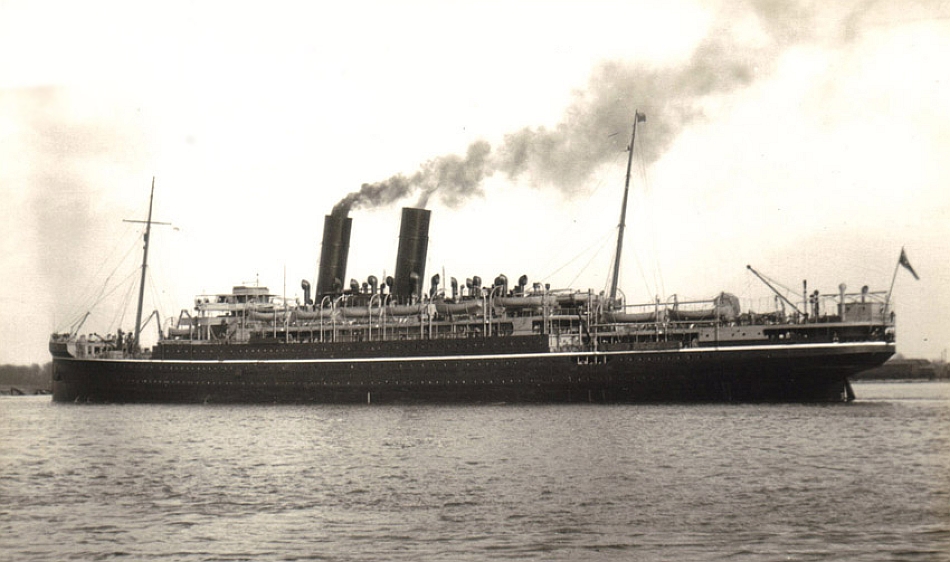
An excellent stern view of the delightful Kaisar-i-Hind
Photograph from the Author’s Private collection
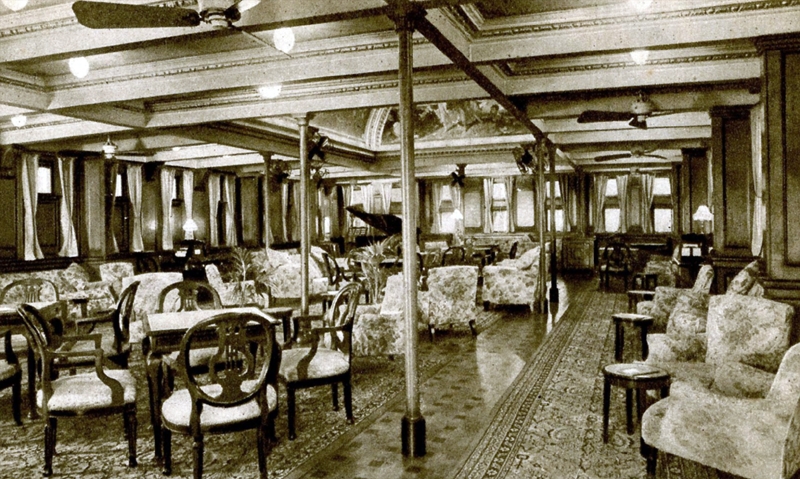
The superbly elegant Main Lounge
Sent in by Chris
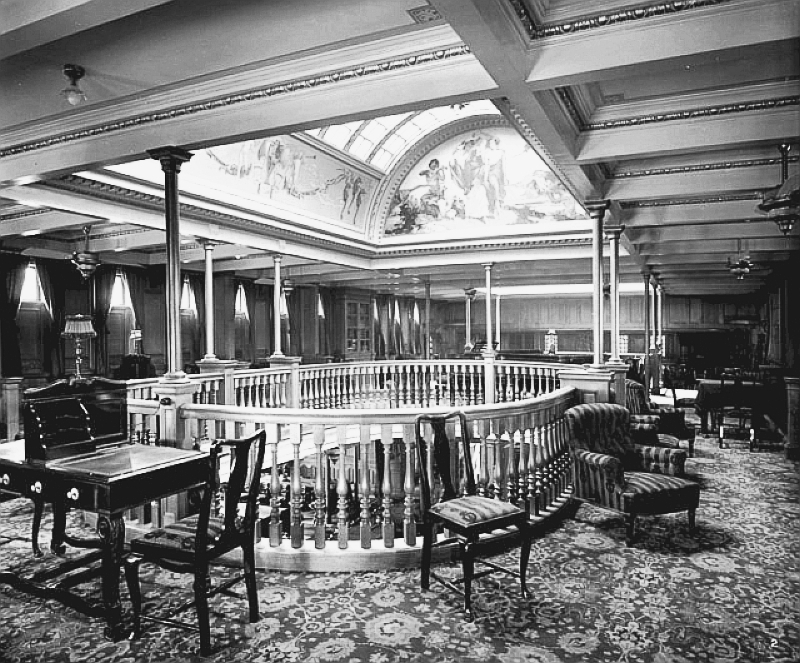
The Music Room was a delightfully spacious venue
with facilities for writing with desks
In addition there was a lounge ideal to listen to
the piano or the trio
Photograph kindly provided by Jason Bonner
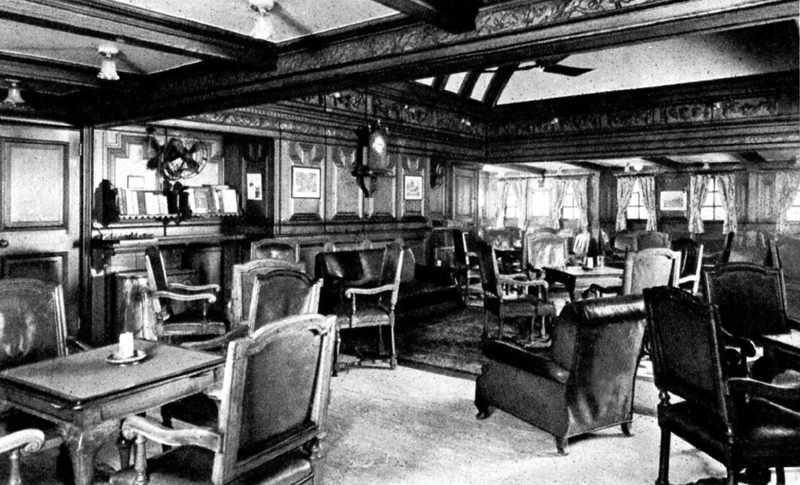
The Smoking Room
Sent in by Chris
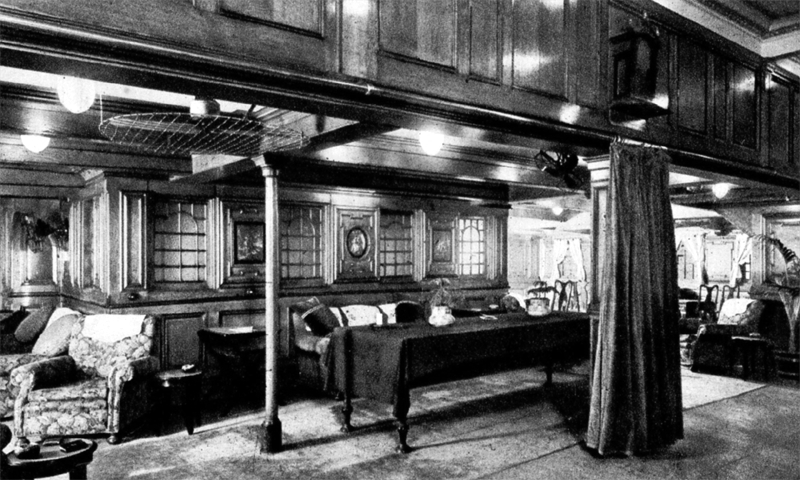
The Saloon
There was far more light and with the comfortable furnishings,
it proved to be more comfortable
Sent in by Chris
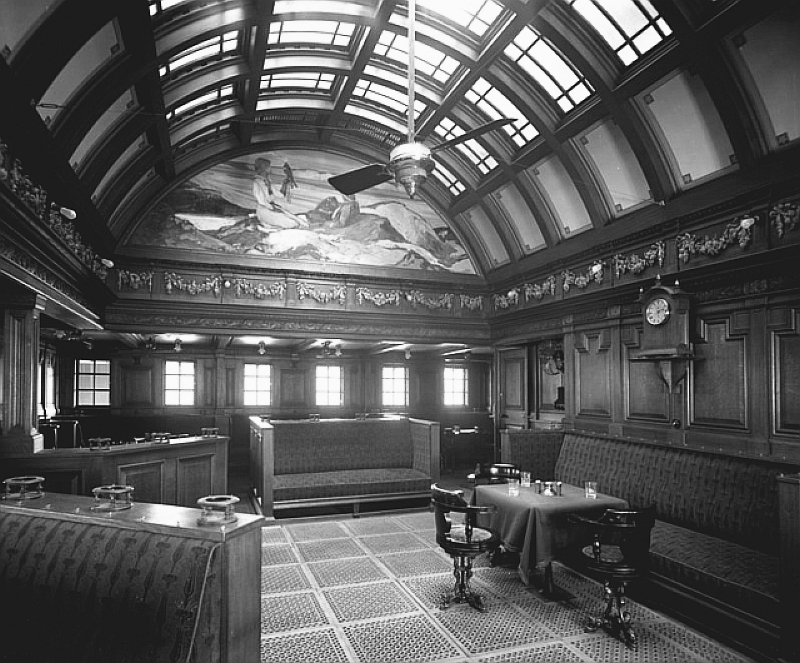
Here we see a much smaller new Saloon after her 1926
refit
Photograph kindly provided by Jason Bonner
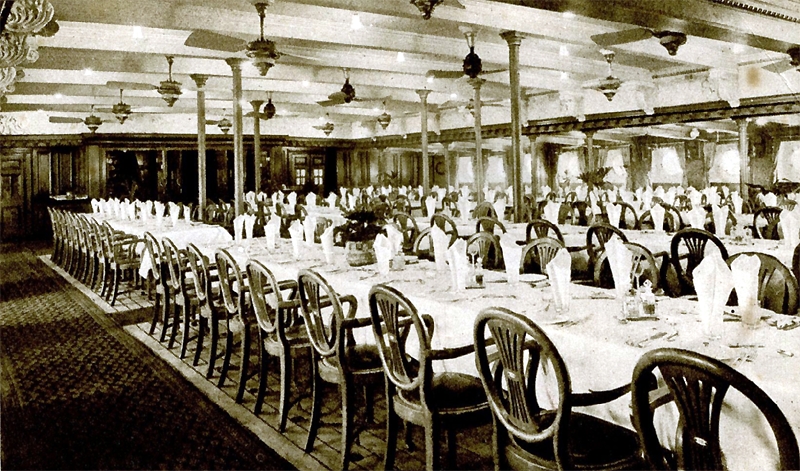
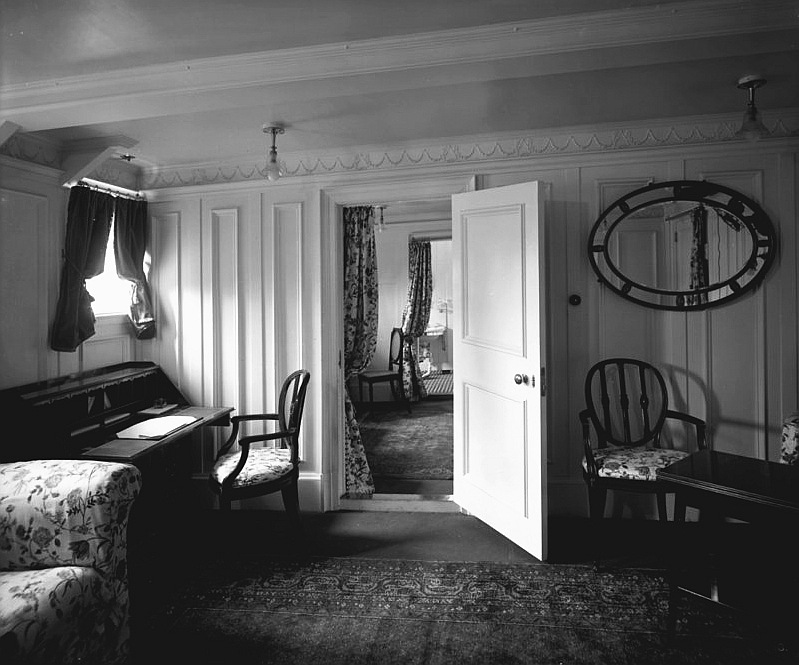
The Deluxe Suite
There was also an additional cabin available for a
maid, butler
Photograph kindly provided by Jason Bonner
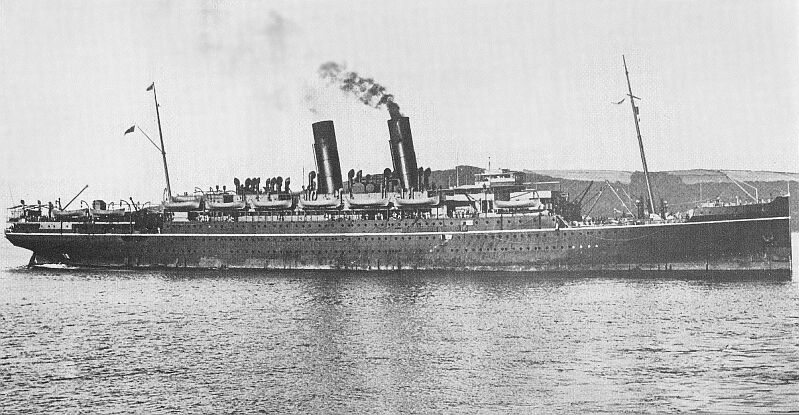
RMS
Kaisar-i-Hind viewed at her starboard side
Photograph from the
Author’s private collection
Services - Liner voyages and War duties:
In 1916 the
Kaisar-i-Hind commenced on the
During her wartime voyages she certainly became known as the lucky ship for she had torpedoes aimed at her and fired directly at her, however amazingly, she survived all of them. We may ask; how could that happen? To be honest, the Germans had no idea of the Kaisar’s speed ability and they tended to calculate her speed based on all the other P&O ships. A massive mistake for the Germans to make, and good fortune for the great Kaisar-i-Hind and extremely lucky for P&O! It was on five occasions she would be targeted by the Krauts, and torpedoes fired at her all missed! Here are the details.
With the Viceroy of India, Lord Chelmsford and his family on board, whilst she was sailing between Crete and Malta on March 23, 1916 the torpedoes fired at her all missed and she sailed at her top speed and managed to get away.
Thereafter she had three more similar misses, but, it had not finished yet for as you know I did mention that there were five times that submarines would fire torpedoes at the Kaisar. Apparently, according to the company records the last time she was actually fired at, she was hit in March 1917 by a torpedo, however for some reason the warhead just failed to explode and penetrate the ships lucky plates, thus it just bounced off. It was said that the ships speed and angle had much to do with that, but not the failure of it not exploding, thus it was the very first torpedo to actually hit but amazingly it simply failed. In addition, it was also the last torpedo sent her way for the rest of the war!
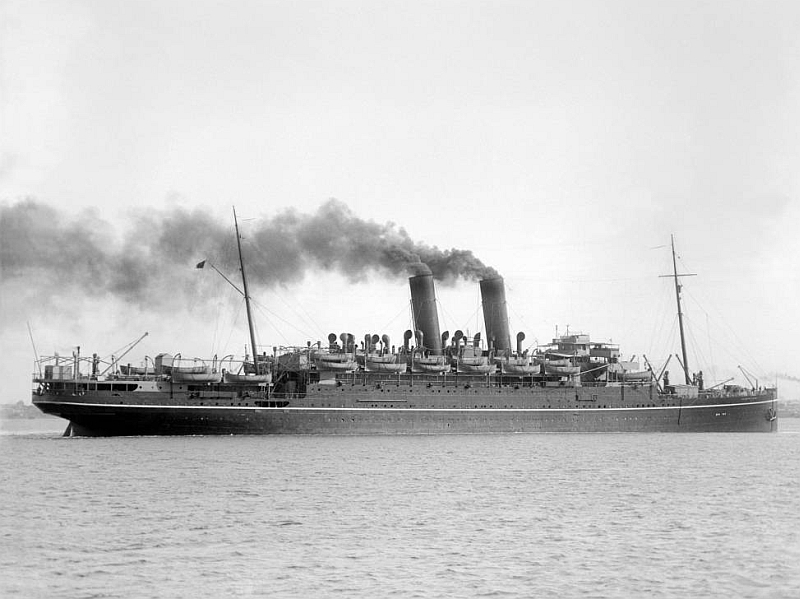
Laden with additional lifeboats the HMS
Kaisar-i-Hind arrives in
However, she was still carrying a certain number of
passengers
Photograph sourced
from State Library of Victoria
However with World War I continuing her regular
voyages were soon interrupted, as the ship was requisitioned by the Royal Navy to be used as a transport ship. She received
a rapid transformation to be able to carry a good number of troops, yet she
retained some First Class accommodations for and venues for a few passengers,
VIPs and high-ranking officers etc. Additional lifeboats were added, thus all,
but two were double banked. During this time she would carry Australian,
British, French & Indian troops operating services to and
from the Middle East,
Towards the end of the war she carried on of the most famous servicemen that fought in the Middle East, Colonel Thomas Edward Lawrence, or as he is also known, Lawrence of Arabia. For his story and other servicemen, passengers and crewmembers go to Page Two!
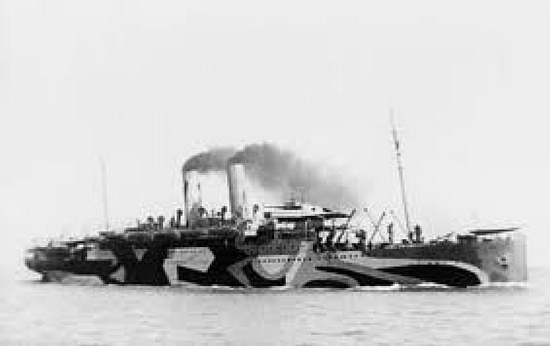
Here is a rare photo of the HMS Kaisar-i-Hind seen
in her special camouflage livery
Source of the photograph is unknown having been sent in by a supporter
*Please see the Photo notes at the bottom of the page
The RMS
Kaisar-i-Hind INDEX is at the bottom of the page!
*******************************************
In June 1921 the RMS
Kaisar-i-Hind was chartered by Cunard Line and she was renamed SS Emperor of
For the first time ever in her history, the wonderful and much loved Kaisar-i-Hind was extremely unpopular with her passengers, for she did not have a single sheltered deck to promenade on, which was the case on all Cunard liners! In addition, a great deal of fog interfered with her schedule during this time and this caused her further problems, again this made booked passengers very unhappy, even though it was not the ships fault!
During one voyage there was a tragic stokehold explosion and sadly it killed three good men, they were long serving Indian firemen. In addition four engineers were badly scalded. To say the least, Cunard made a total disaster of this charter for they used a ship that should never have been used in these conditions, for she was not built for it! Prior to their charter, all they did is look at her beautiful interiors, which everyone knows are a pure a delight, but she was a poor choice by Cunard Line and to be honest, P&O should have also known better!
Late in December
1921 she resumed her
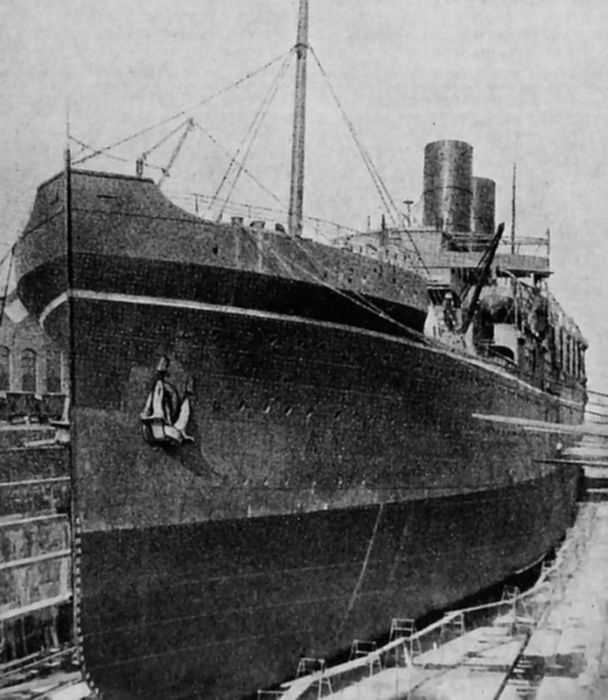
She
is seen in dry-dock in 1926 for her refit
Photo from the
Author’s private collection
The next
occurrence occurred was on November 1, 1931, when the Kaisar-i-Hind dragged her
anchor during a storm in
Prince of Wales sails:
The Prince of
Wales commenced his tour of East Africa by departing
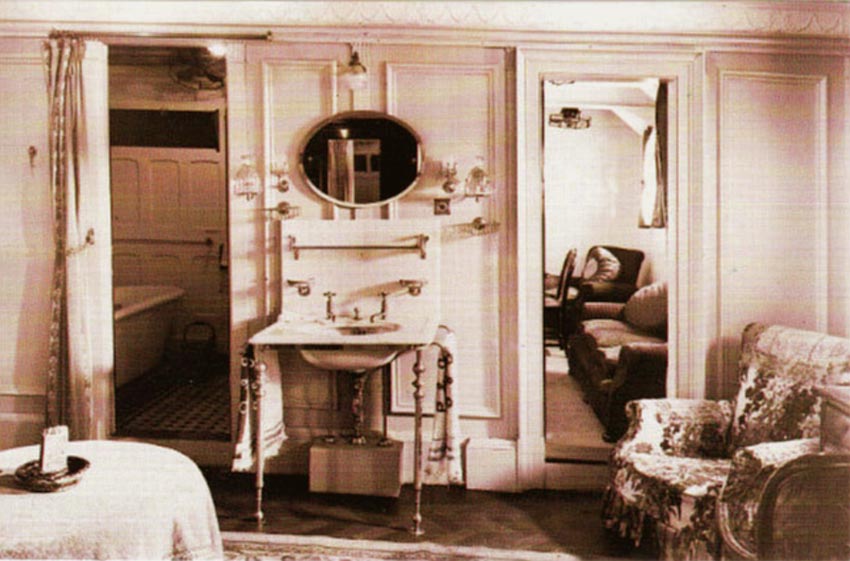
Whilst the Prince of Wales toured
Here we see his accommodations; we see his bedroom,
lounge, study & bathroom
After months in Africa, King George had fallen very ill and the
Prince of Wales boarded the cruiser
In May 1932 she
was one of six ships that went to the aid of the French liner Georges Philippar
that was on fire in the
Whilst on her
voyage back to
From her refit in 1926, and yet having those few incidents as mentioned prior the Prince of Wales story, the wonderful Kaisar-i-Hind continued to sail most successfully for another wonderful twelve years, but by the end of those years she was slowly beginning to show her age!
The End of a fine Liner Arrives!
The RMS
Kaisar-i-Hind arrived at
Sadly at age of 24
years, which for those times was quite considerable, the Kaisar-i-Hind was sold
(on April 26, 1938) for £28,500 just two days after her arrival in
The greatly loved
RMS Kaisar-i-Hind headed for the Hughes Bolckow Ship breakers yards at
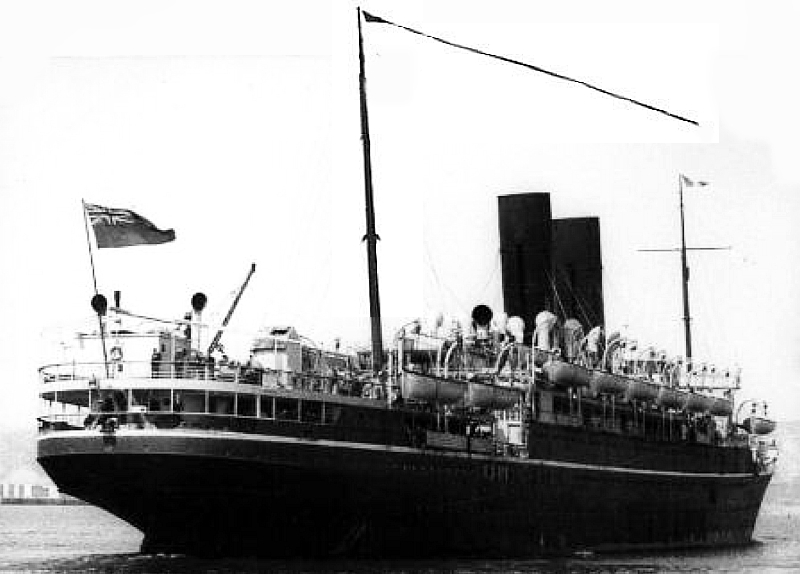
RMS
Kaisar-i-Hind departs Tilbury Dock (
she
is flying a 72ft – 22m long pennant denoting her many years of service
Photograph from the
Author’s private collection
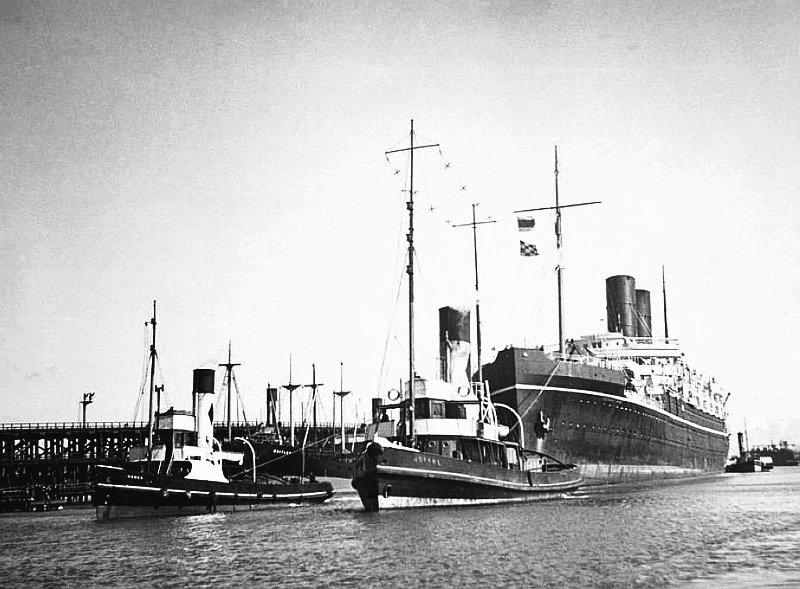
Tugs tow her into the breakers yard at
Photograph
sent by a supporter, but possibly taken by a “T Lister”
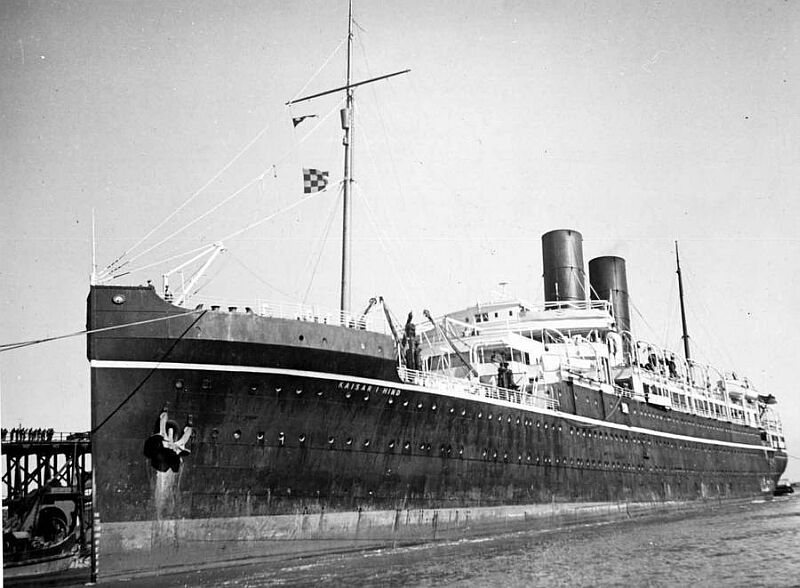
In
this final photograph of a great ship, we see her being prepared to depart for
the “Hughes Bolckow” Ship Breakers at
Photograph
sent by a supporter, but possibly taken by a “T Lister”
RMS Kaisar-i-Hind -
Specifications:
Builder: Caird
& Co Ltd,
Yard number: 327.
Launched: June
28, 1914
Maiden
voyage: October 24, 1914
Tonnage: 1914 11,430
GRT - 7,305 DW.
Tonnage: 1926: 11,518
GRT.
Length: 158.50m
- 520ft.
Breadth: 18.65m
- 61.2ft.
Draught: 8.839m
- 29ft.
Engines: Quadruple
Extension Steam Engines.
Power: 14,000
IHP.
Built by: Caird
& Co Ltd.
Propulsion: Twin
Screws.
Speed: 18.5
Knots.
Passengers: 548:
315 First and 233 Second Class.
Crew: 332:
138 European and 194 Asian.
She was and still
is Greatly Loved by so Many!
--I know, for I continue to receive
thousands of emails regarding her over the years!--
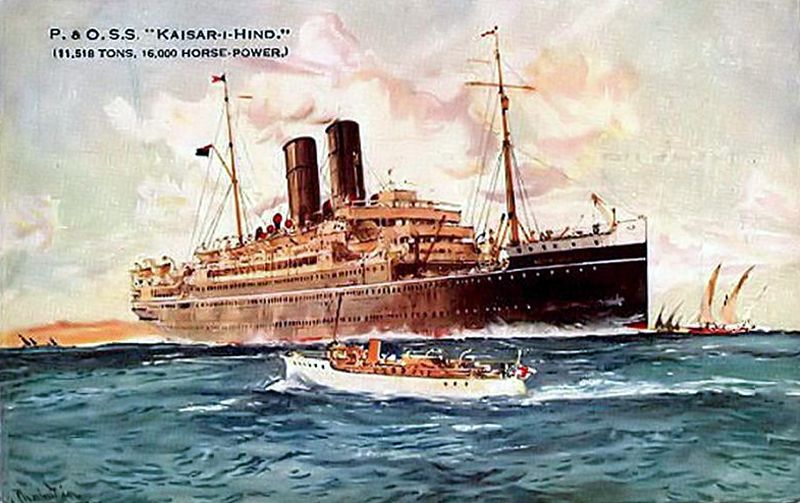
Great Memories of the RMS Kaisar-i-Hind
Postcard from the
Author’s private collection
***********************************
RMS Kaisar-i-Hind INDEX:
Page One: RMS
Kaisar-i-Hind history page.
Page
Two: Interesting
Servicemen, Passenger & Crew stories.
Page
Three
Page Four: Bertrum Butcher sails in 1937 the Centenary Year!
Use
the Back button on your browser or Close the Page to return to the previous
page
or go to our INDEX
***********************************
Who is the Author of ssMaritime?
Commenced
in the passenger Shipping Industry in May 1960
Also visit my …
“Save The Classic Liners Campaign”
This notice
covers all pages, although, and I have done my best to ensure that all
photographs are duly credited and that this notice is displaced on each page,
that is, when a page is updated!
ssMaritime is owned and © Copyright by
